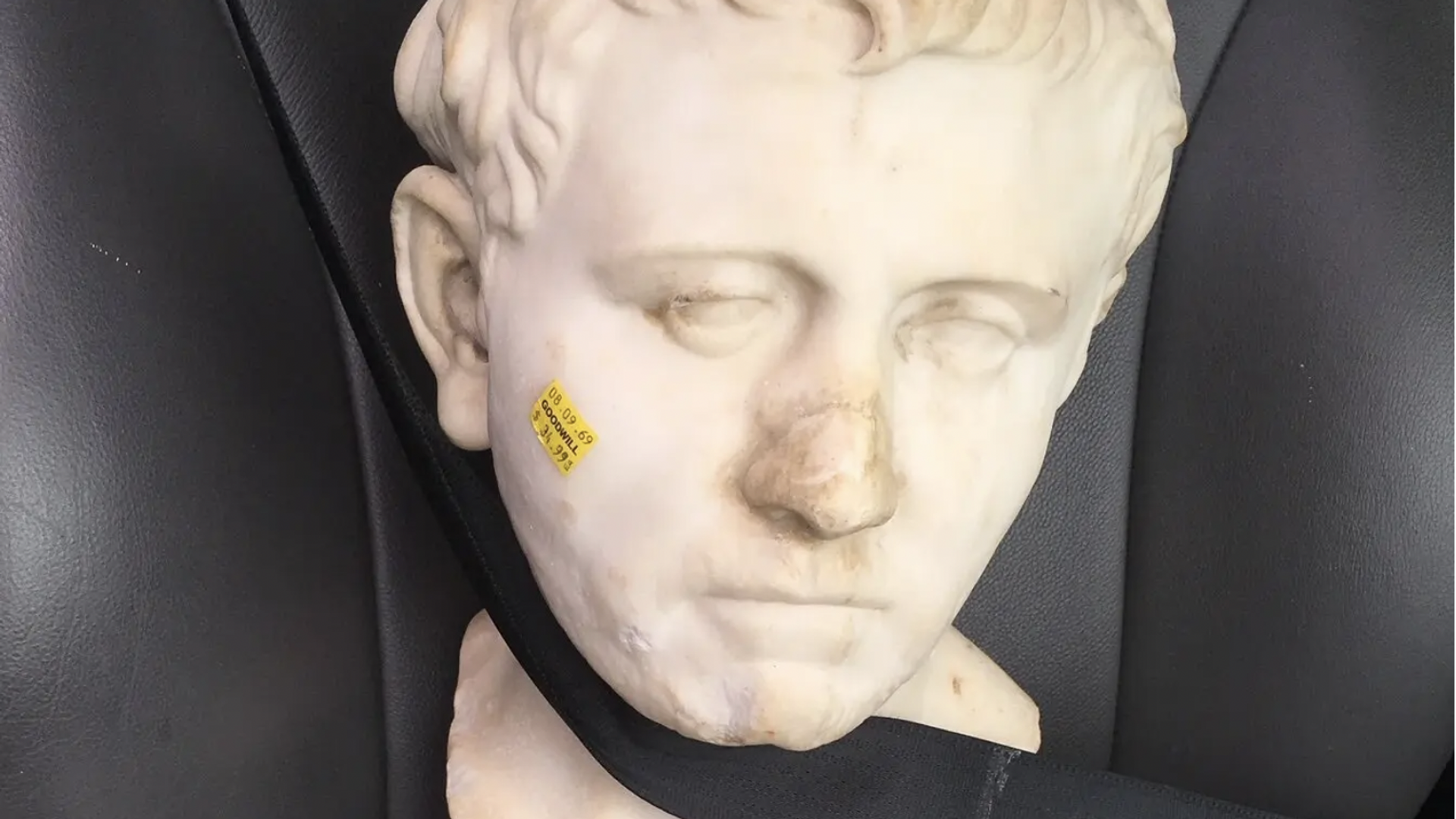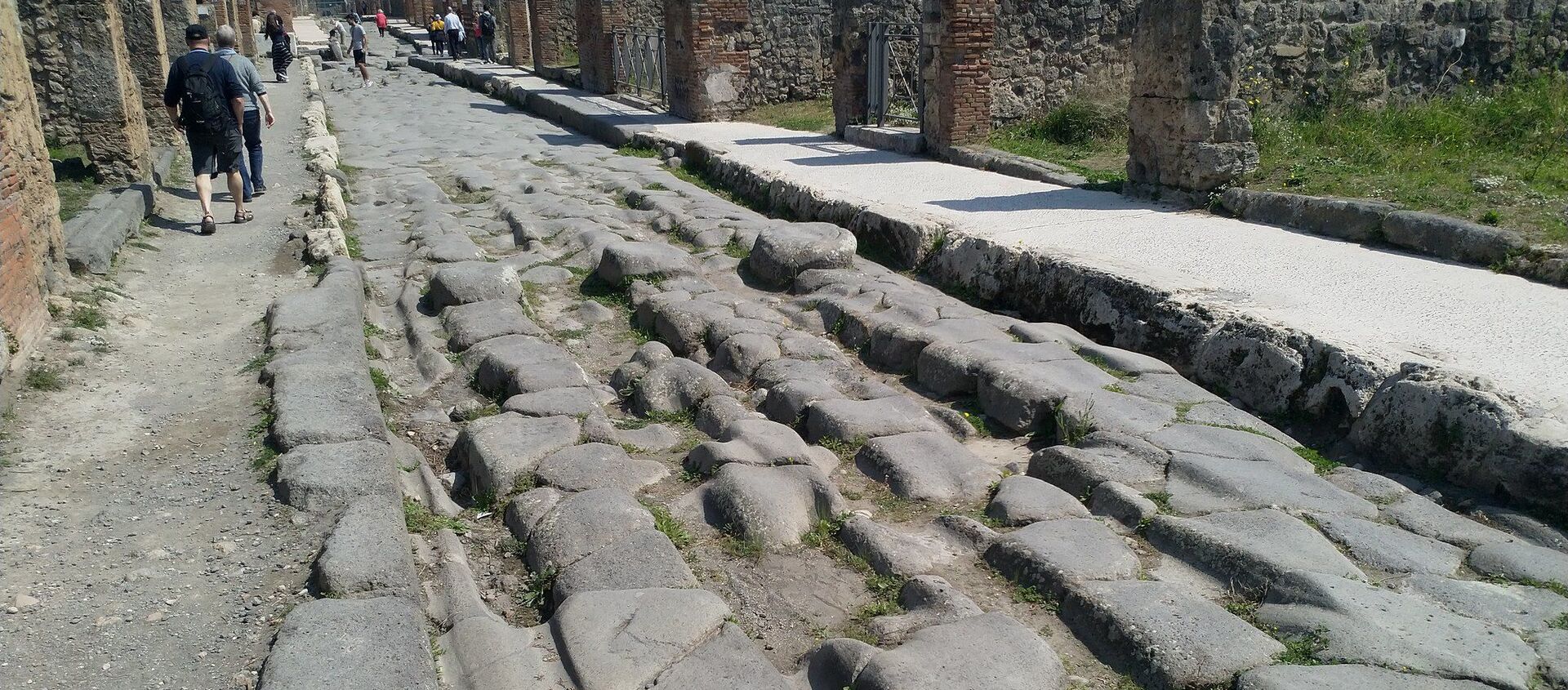Texas Woman Buys Ancient Roman Bust for $35.99 at Thrift Shop

© Laura Young
Subscribe
During World War II, both Nazi and Allied forces looted art and ancient artifacts as Europe was engulfed by chaos. While much of it remains lost, from time to time some pieces reappear.
You may think you have bought some great finds at Goodwill, the national non-profit of thrift shops, or gotten some good deals but rest assured Laura Young has you beat.
In 2018, the antiques dealer saw a Roman-style marble bust at Goodwill in Austin, Texas, and thought it looked older and more valuable than the $35.99 price sticker indicated, so she decided to bring it home and see if her hunch would pay off.
She had no idea how right she was. After bringing it to two different auction houses, it was determined that it wasn’t just a Roman style bust, it was Roman. The bust is believed to be from around the 1st century AD.
How it ended up sitting under a table in a Goodwill in Texas remains a mystery. But unfortunately for Young, subsequent research revealed that she would not be allowed to sell or keep the bust.
The Bavarian government determined that the bust was once owned by the Bavarian King Ludwig I, who acquired it sometime before 1833. He displayed it at Pompejanum, a replica of a Roman Villa in Pompeii that Ludwig built in the town of Aschaffenburg.
Pompejanum was damaged heavily by allied bombing during World War II and much of the art was destroyed or stolen. That is likely what happened to the bust Young found, either stolen by an American soldier or bought by an American soldier from someone who stole it. Presumably, the statue made its way to Texas when the soldier returned home. Thousands of pieces of art were brought to the United States by American soldiers after World War II. Goodwill was unable to help determine who donated it because they do not keep records of donors.
Pompejanum was damaged heavily by allied bombing during World War II and much of the art was destroyed or stolen. That is likely what happened to the bust Young found, either stolen by an American soldier or bought by an American soldier from someone who stole it. Presumably, the statue made its way to Texas when the soldier returned home. Thousands of pieces of art were brought to the United States by American soldiers after World War II. Goodwill was unable to help determine who donated it because they do not keep records of donors.
Because Germany never relinquished their claim on the item, Young cannot claim ownership of it or sell it. It took four years of negotiation, partially because of the pandemic and partially because these things just take a long time, but a deal was struck and the bust will be returned to Germany, eventually. The conditions of the deal were not disclosed, but part of it includes the bust being displayed in the San Antonio Museum of Art until May 2023.
According to conflicting reports, the bust either represents Pompey the Great, a member of the First Triumvirate who was eventually defeated by his one-time ally Julius Caesar, or Drusus Germanicus, who as a general, occupied parts of German territory and was the great-grandfather of the infamous Emperor Nero.
Young nicknamed the bust “Dennis” after Dennis Reynolds, a character in the popular crass sitcom It’s Always Sunny in Philadelphia.
Young says she chose the name because like Dennis, “he was attractive, he was cold, he was aloof. I couldn't really have him. He was difficult.”
Despite knowing that she will probably never find something as rare, old or exotic as the bust, Young says she still plans to browse Goodwill stores, looking for her next great find. And Dennis will be with her forever, in a way. She scanned the bust and 3D printed a half sized model before handing it over.


